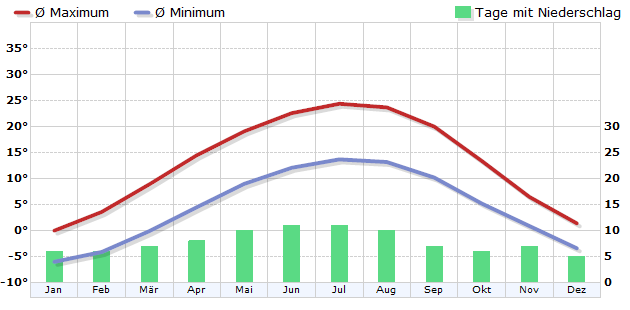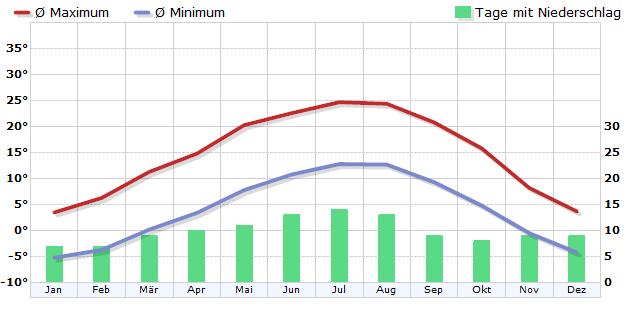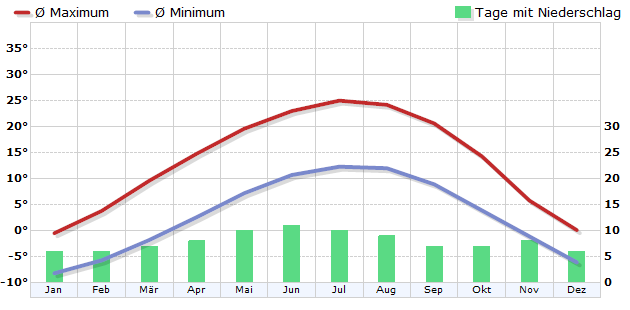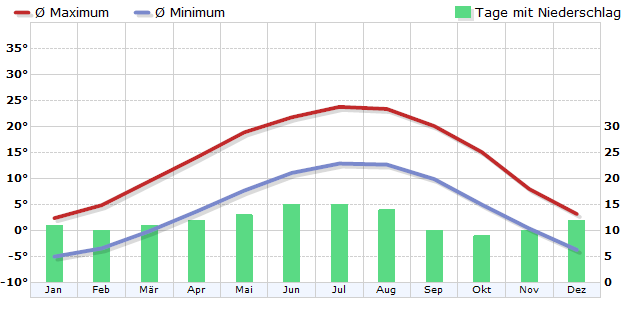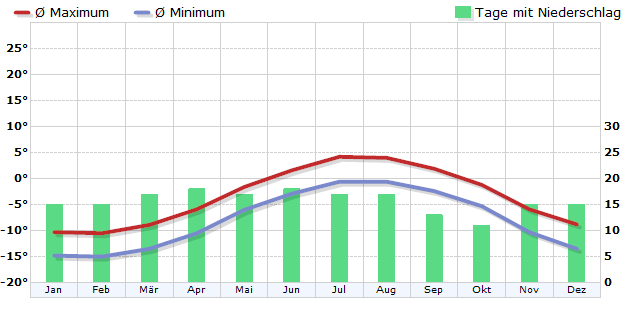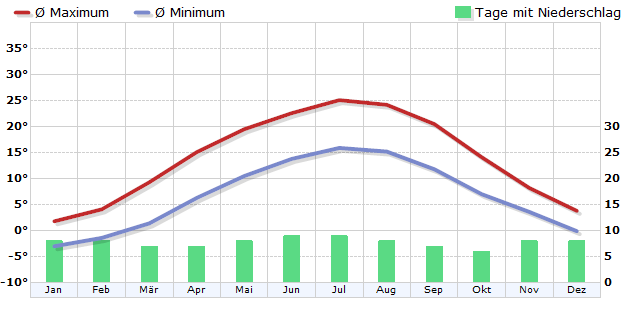Climate Austria
Austria lies in the temperate climate zone and in the transitional area between oceanic and continental climate. Due to its location and topography, Austria can be divided into three climatic areas. In the north and west, the maritime climate predominates with not too warm summers and rather mild winters. In addition, there is relatively high precipitation due to humid westerly and northwesterly winds, which cause congestion in the mountains. The east, on the other hand, is characterised by a continental climate. There the summers are warmer and the winters colder than in the west of the country. The annual precipitation is significantly lower. The third area is the mountain regions with an alpine climate. Here, short summers and long winters prevail, and in some cases very high amounts of precipitation fall. High valleys are an exception to this rule. The warmest months are July and August with average temperatures of up to 25 degrees in the east of the country. In the winter months the average temperatures are usually between 0 and 5 degrees. The largest amounts of precipitation fall predominantly in the summer months.
Summer and autumn are the best months for hiking and climbing in the Alps. The skiing season lasts from November to April, whereby many higher regions are regarded as snow-sure from December to March.

